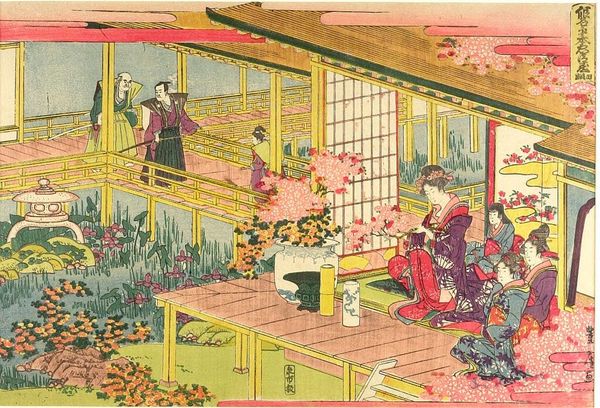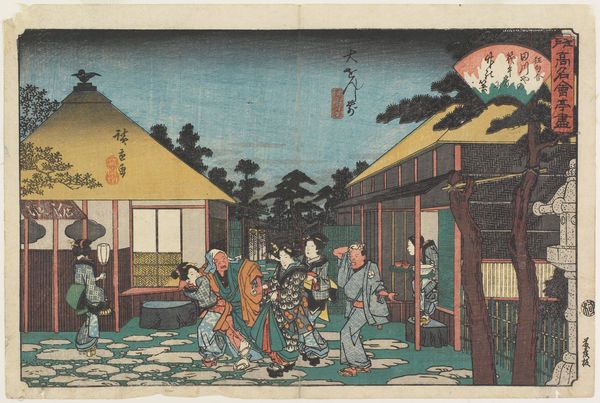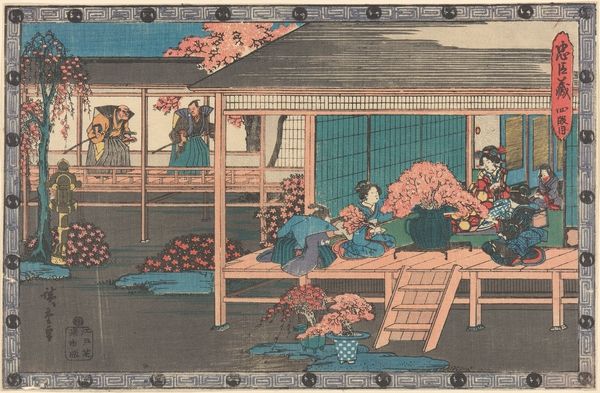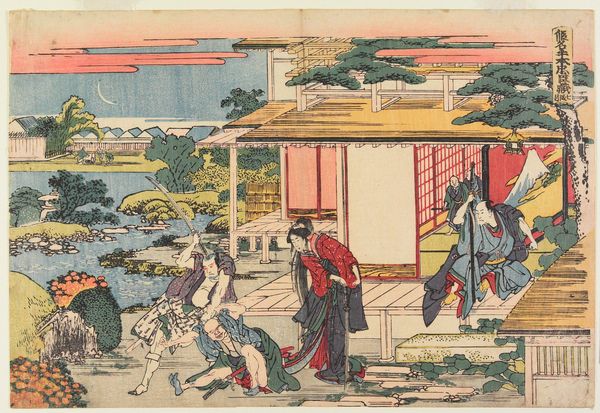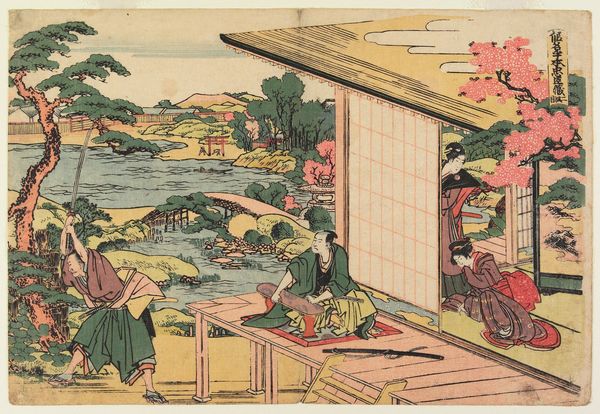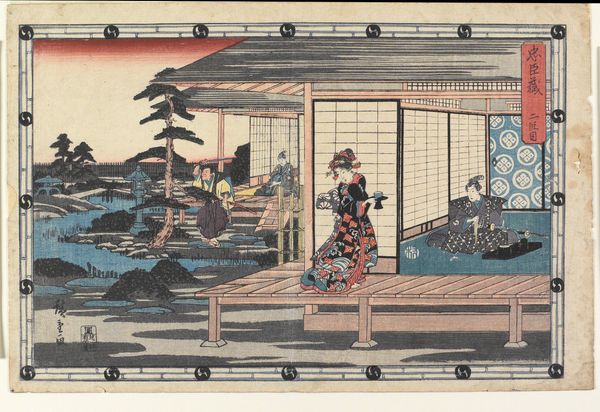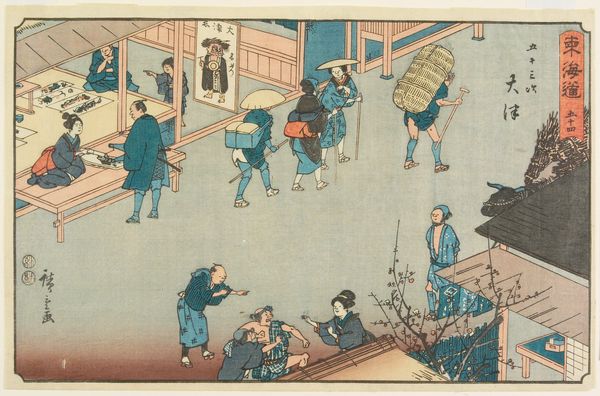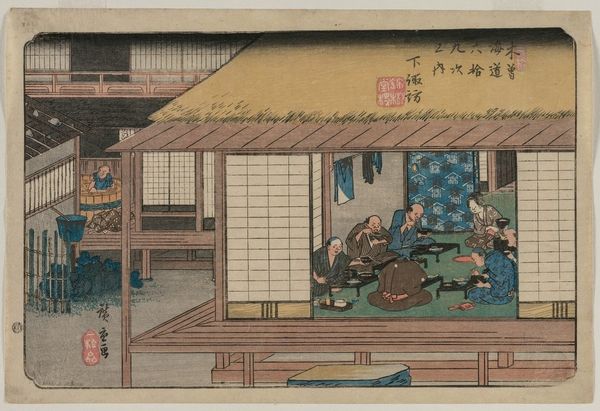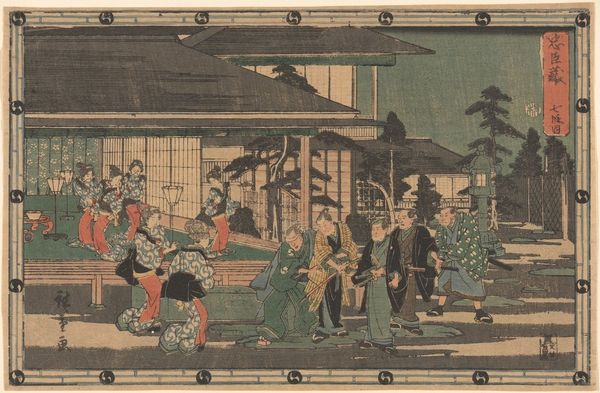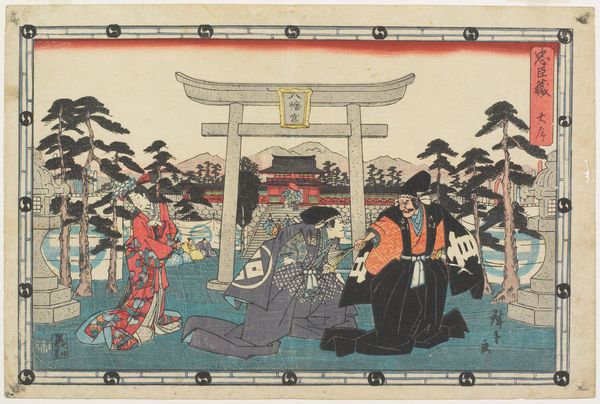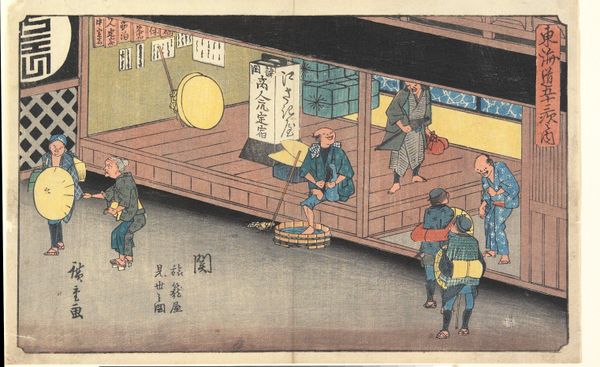
print, ink, color-on-paper
#
abstract painting
#
water colours
# print
#
japan
#
handmade artwork painting
#
ink
#
tile art
#
fluid art
#
color-on-paper
#
coffee painting
#
wall painting
#
watercolour bleed
#
watercolour illustration
#
watercolor
Dimensions: 10 3/16 × 14 15/16 in. (25.8 × 38 cm) (image, sheet, horizontal ōban)
Copyright: Public Domain
Curator: Katsushika Hokusai’s color print, Act IV, circa 1806, held here at the Minneapolis Institute of Art. What's your immediate take? Editor: Serenity. Despite the scene teeming with figures and intricate architecture, the delicate colours—pink blossoms, pastel blues—create a supremely tranquil mood. Curator: Note the composition. The receding planes and intricate linear perspective of the verandas create depth, framing distinct social spaces within the print. Editor: Yes, the linear framework segregates gender and status. Look at the men with swords in the upper left compared to the women gathered below, their roles clearly delineated. Curator: Precisely. It's a complex arrangement of aesthetic principles where formal elements work together to express distinct spaces, each holding certain social codes. The blossom motif, permeating every corner of the depicted scene, suggests notions of time. Editor: Blossom here signifies ephemeral beauty, echoing the transient lives of women and geishas displayed as beautiful objects for upper-class men. This depiction does highlight their power within prescribed roles. How the artist reflects on gender hierarchies in this temporal painting remains a discussion. Curator: It's fascinating how the composition echoes structured societal interactions while it depicts these scenes on a visual surface. It does demonstrate a pictorial interpretation of Japanese theatre, particularly the symbolic stage designs in play. Editor: The beauty masks rigid class distinctions. Yet, art allows space for a renewed reading of old tales with contemporary lenses, permitting interrogation. It holds complex dynamics that we may now question through today’s ideologies. Curator: The meticulous patterning across surfaces reveals both meticulous control, artistic vision and visual allegory, as art can both display tradition and be reinterpreted with our developing ethos. Editor: Indeed, reflecting on art requires more than only studying its colours, lines, and shapes. Rather, engaging in broader dialogues that echo histories and contemporary concerns encourages greater critical engagement.
Comments
No comments
Be the first to comment and join the conversation on the ultimate creative platform.
